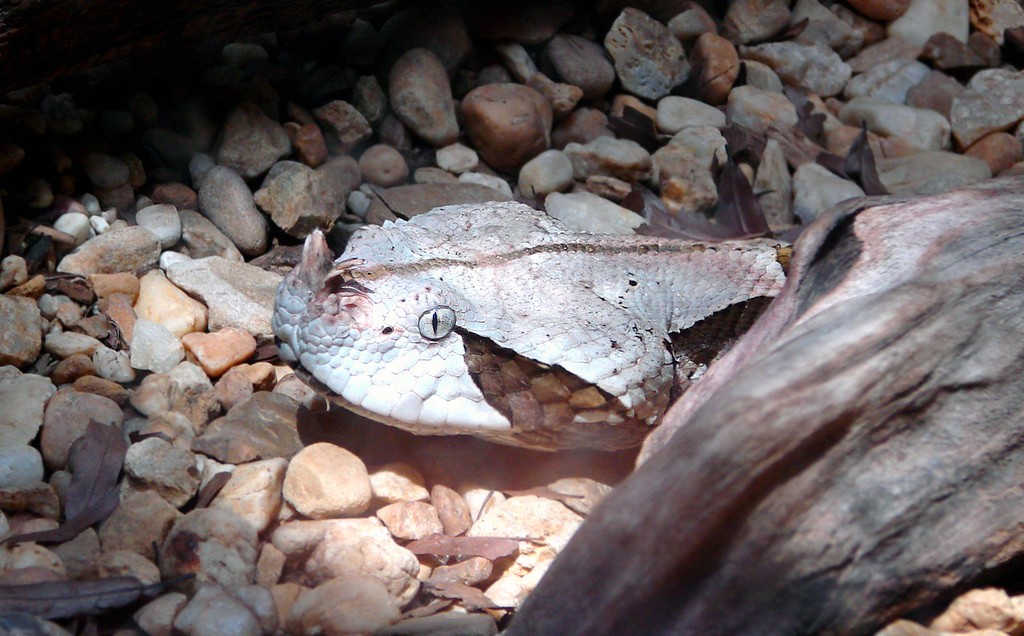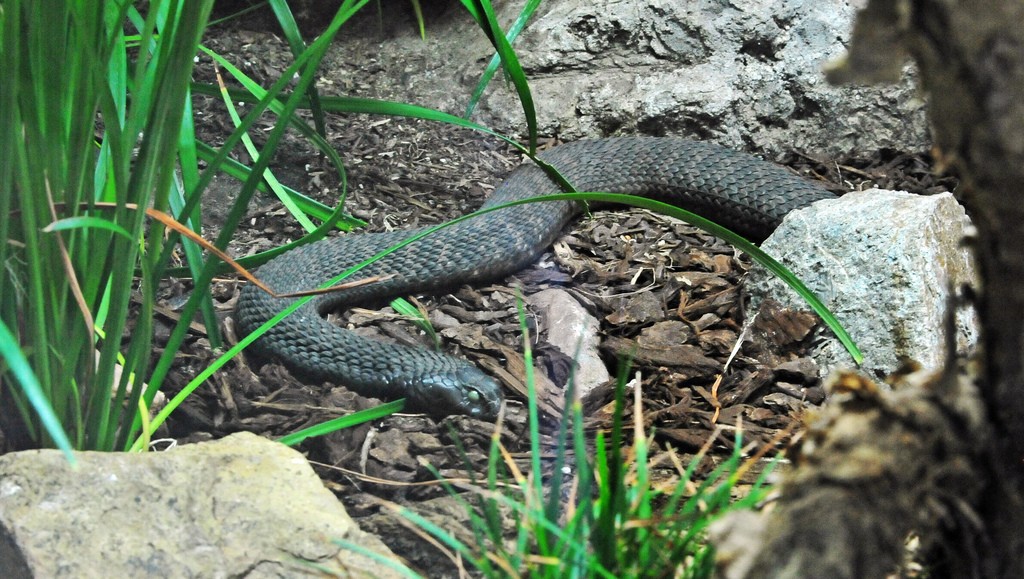A good thing to keep in mind is that snakes are not restricted to the ground. They can slither up trees and branches and some can swim in water. So remember when you are walking through a wooded area not to focus your ‘snake radar' only at feet level. They could be hanging out right next to you in a tree.
The Rhinoceros Viper

The rhinoceros viper, also called the river jack, can grow to be somewhat large in size. Adults normally grow to be 2 to 4 feet in length. The head of this animal is considerably smaller in size than its body. The rhinoceros viper's head is one of its most distinguishing characteristics. The rhino viper's head is in a triangular shape. There are 2 or 3 “horns” above each nostril. The coloration of the rhinoceros viper is incredible. Because of the various patterns and colors, the rhino viper has often been regarded as one of the most beautiful snakes in the world (see the above picture). Coloration in the rhinoceros viper is an adaptive feature. The degree of light and dark colors of this snake depends on its habitat. This wetland species of adders has darker colors which allow it to blend well with the jungle floor where it would most likely be found.
Great description information provided by Whozoo. To read more about this snake, its habits and venom details, you can read it here.
Original Photo Source: Matt Reinbold
Rinkhals Cobra

This snake can be identified by the following, a dull black or brown body (mostly in Gauteng) or a banded patterning elsewhere in its distribution, 2 or 3 white bands on its hood, its keeled (rough scales) and its ability to play dead.The Rinkhals has potentially deadly neurotoxic venom that will not as deadly as the Cape cobra could still kill a man. This snake also unique because it is one of 3 snake species in South Africa that is able spit its venom, despite this there are very few fatalities attributed to this snake and in any case there is an effective antivenom. This snake is still dangerous however because its venom can cause blindness when directed into the eyes.
Blindless? No thank you. To read this article (and not just the highlight above) head over to BioDiversity.
http://survivallife.com/2015/04/13/survival-skills-venomous-snakes/
Source of content